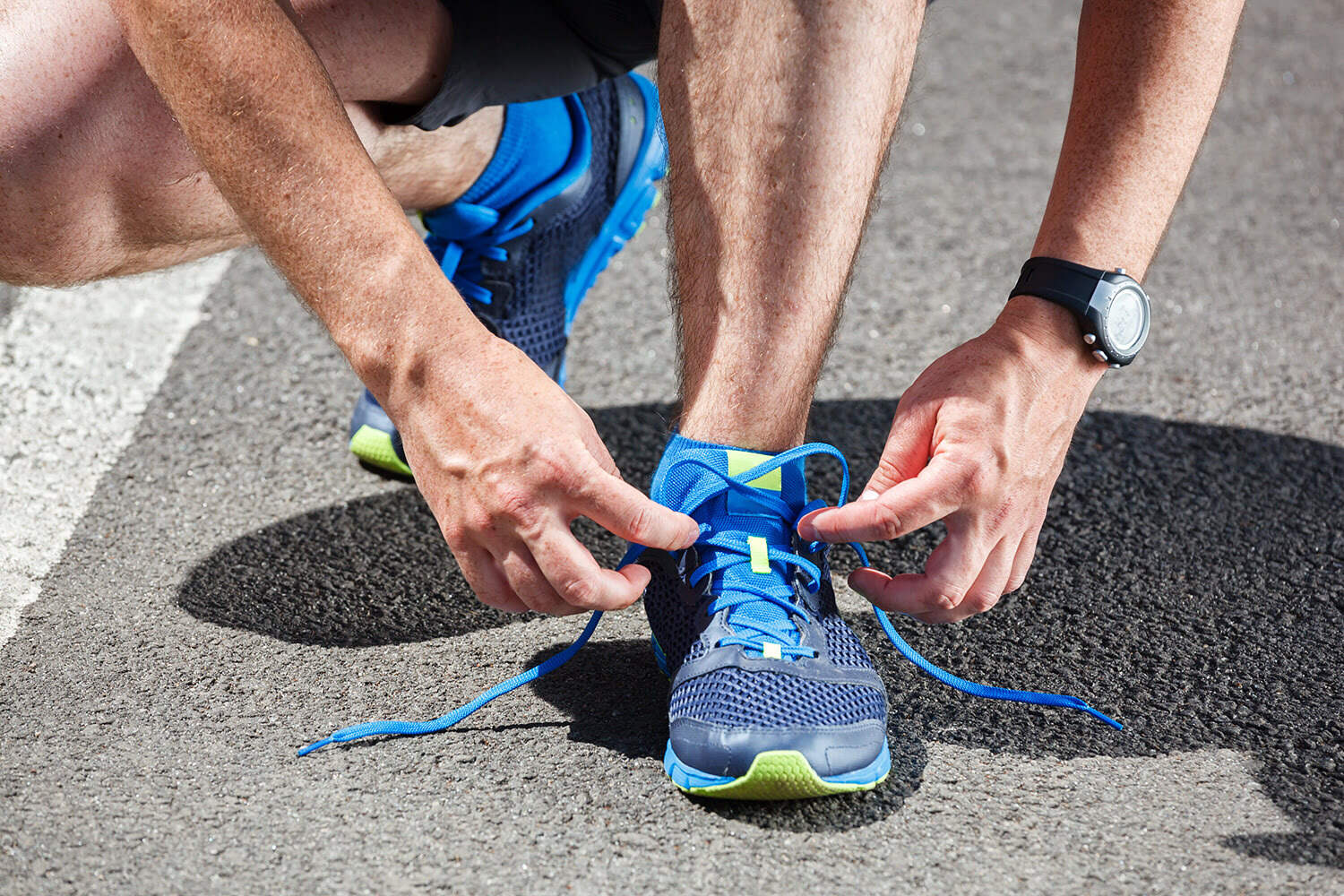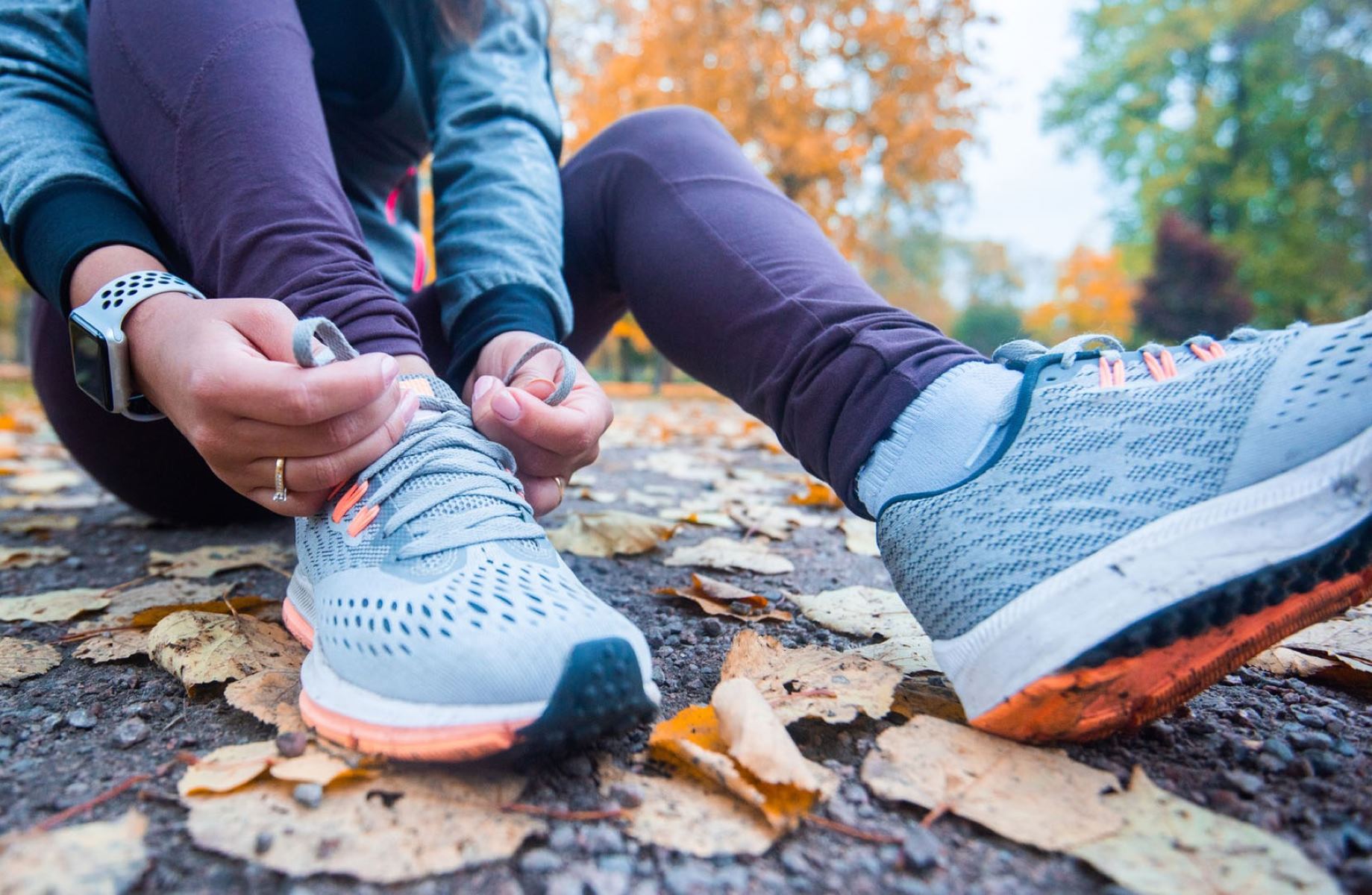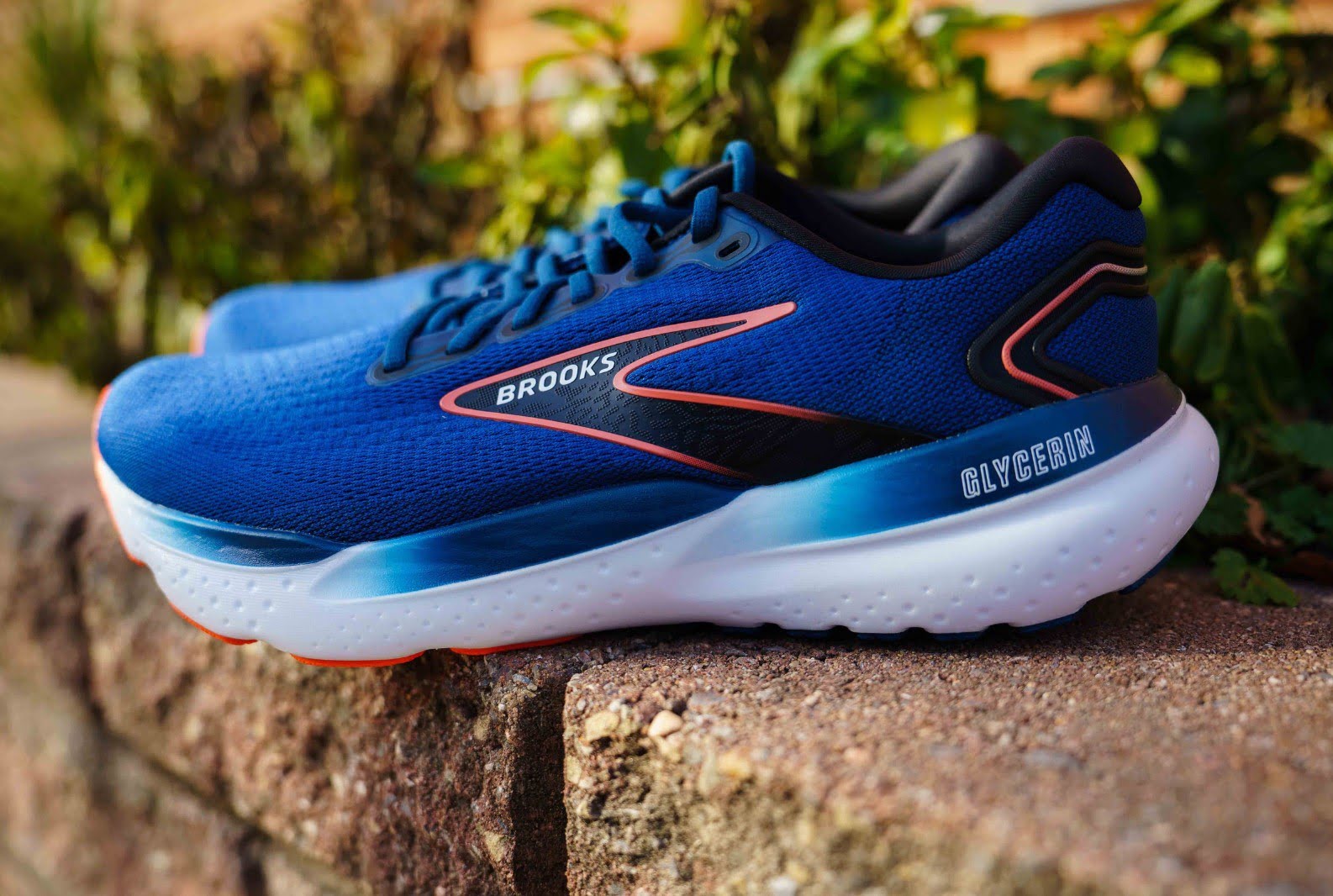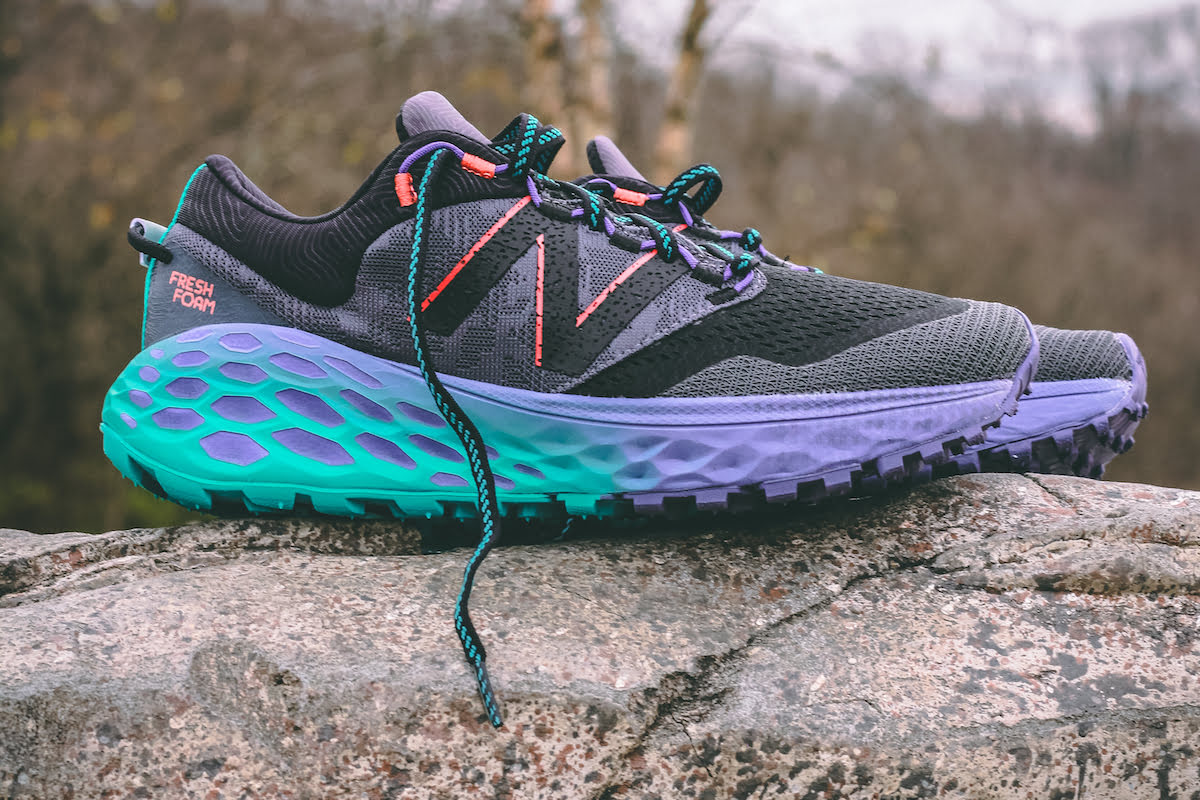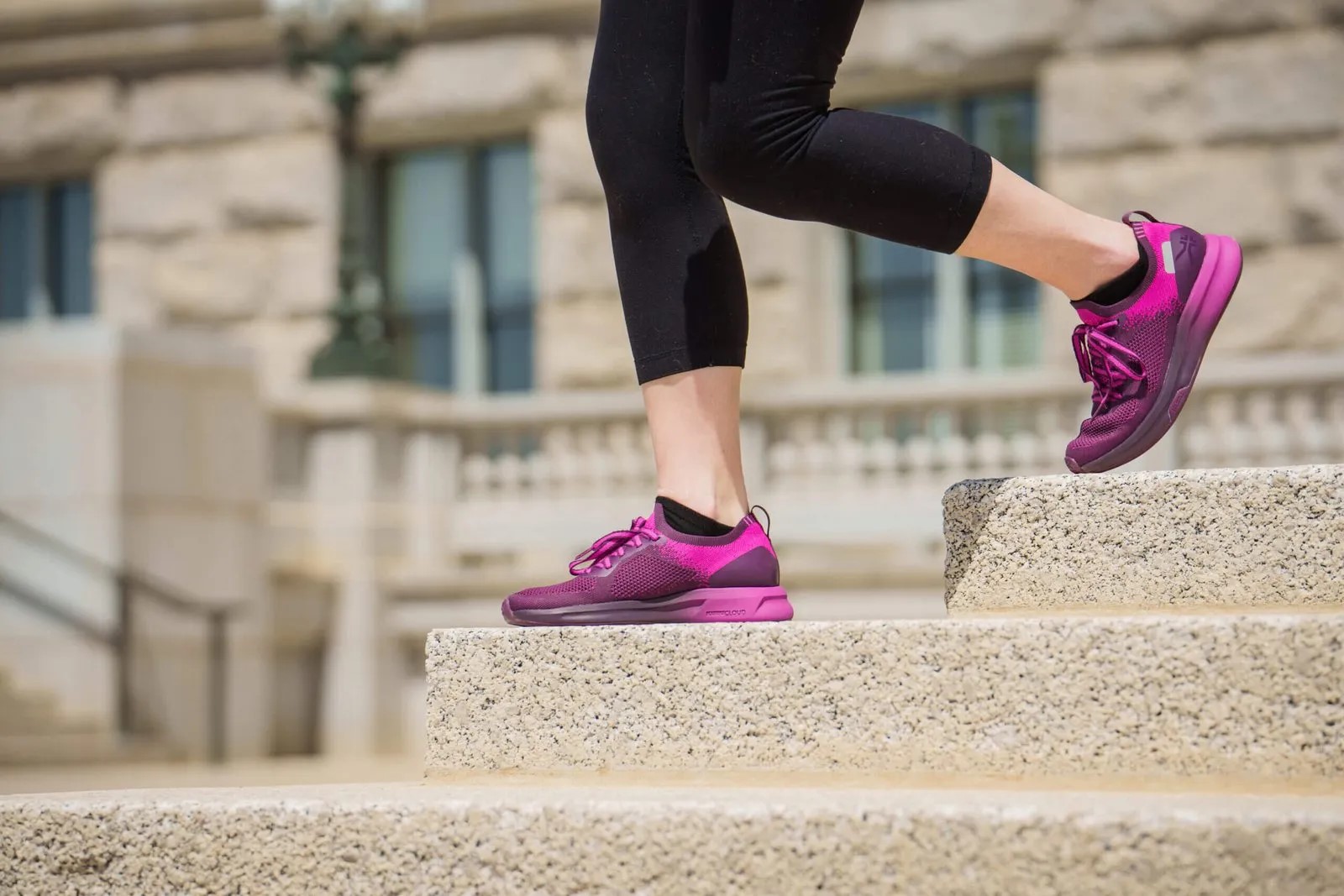Home>Training & Techniques>Cross-Training>Top Home Workouts For Runners
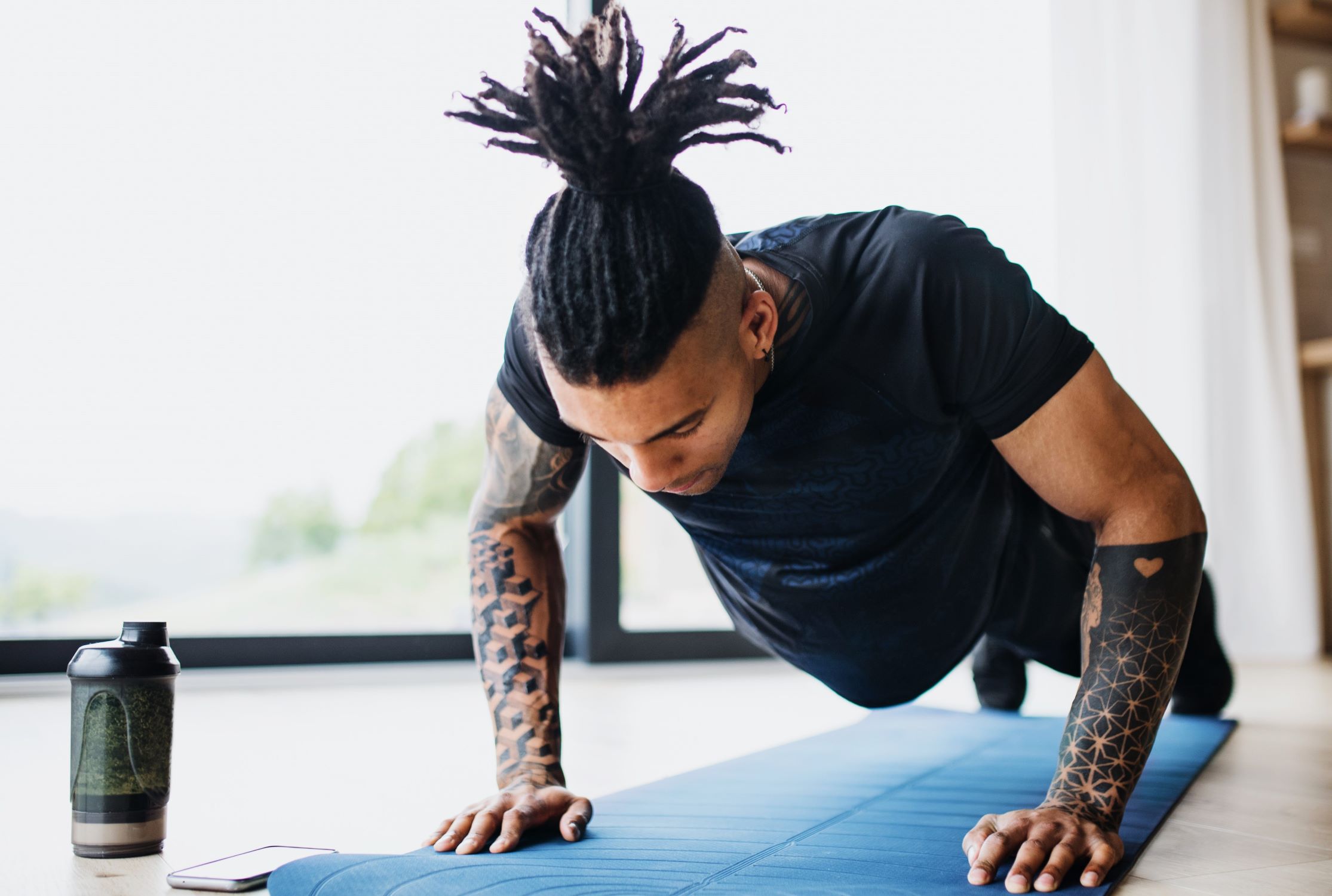

Cross-Training
Top Home Workouts For Runners
Published: February 20, 2024
Discover the best cross-training home workouts for runners to improve strength and endurance. Get fit and stay injury-free with these effective exercises.
(Many of the links in this article redirect to a specific reviewed product. Your purchase of these products through affiliate links helps to generate commission for Therunningadvisor.com, at no extra cost. Learn more)
Table of Contents
Benefits of Home Workouts for Runners
Engaging in home workouts offers a myriad of advantages for runners, complementing their regular training routines and enhancing overall performance. These benefits extend beyond physical fitness, encompassing mental well-being and convenience. Let's delve into the various advantages of incorporating home workouts into a runner's regimen:
-
Convenience: Home workouts provide runners with the flexibility to exercise at their preferred time, eliminating the need to adhere to gym schedules or commuting to fitness facilities. This convenience is especially beneficial for individuals with busy schedules, allowing them to seamlessly integrate workouts into their daily routine.
-
Cost-Effective: By opting for home workouts, runners can avoid expensive gym memberships and commuting expenses. Additionally, the absence of equipment fees and the ability to utilize household items for exercises contribute to significant cost savings.
-
Personalized Environment: Training at home enables runners to create a personalized workout environment tailored to their preferences. Whether it's selecting motivational music, adjusting room temperature, or choosing a scenic spot for outdoor workouts, the ability to customize the exercise setting can enhance motivation and enjoyment.
-
Time Efficiency: Home workouts eliminate the time spent traveling to and from the gym, maximizing the time available for actual training. This time efficiency is particularly advantageous for runners juggling multiple responsibilities, allowing them to allocate more time to their fitness endeavors.
-
Privacy and Comfort: Exercising at home provides a level of privacy and comfort that may not be attainable in public fitness facilities. This can be especially beneficial for individuals who are self-conscious or prefer a more intimate setting for their workouts.
-
Adaptability: Home workouts offer the flexibility to tailor exercises based on individual preferences and specific training needs. This adaptability allows runners to incorporate a diverse range of workouts, including strength training, cardio, and flexibility exercises, catering to their unique fitness goals.
-
Consistency: With home workouts, runners can maintain a consistent training routine regardless of external factors such as weather conditions or gym operating hours. This consistency plays a pivotal role in achieving long-term fitness goals and sustaining overall well-being.
By embracing home workouts, runners can harness these benefits to elevate their training experience, optimize performance, and foster a holistic approach to health and fitness.
Read more: Top Treadmill Workouts For Runners
Essential Equipment for Home Workouts
When embarking on home workouts, having the right equipment is essential to ensure effective and varied training sessions. While the beauty of home workouts lies in their adaptability and minimal reliance on specialized gear, a few key items can significantly enhance the quality and diversity of exercises. Here's a comprehensive guide to the essential equipment for home workouts:
1. Yoga Mat
A high-quality yoga mat serves as a versatile foundation for a wide array of exercises, offering cushioning and support for floor-based movements, yoga poses, and stretching routines. Its non-slip surface provides stability during workouts, making it an indispensable asset for home fitness enthusiasts.
2. Resistance Bands
Compact and highly versatile, resistance bands are invaluable for strength training, muscle activation, and rehabilitation exercises. These elastic bands come in varying resistance levels, allowing users to customize the intensity of their workouts. From bicep curls to lateral leg raises, resistance bands facilitate a full-body workout experience.
3. Dumbbells
Dumbbells are fundamental for building strength and muscle mass. Their compact nature makes them suitable for home use, enabling a wide range of exercises such as squats, lunges, shoulder presses, and bicep curls. Investing in a set of adjustable dumbbells can provide a cost-effective and space-efficient solution for progressive resistance training.
4. Stability Ball
Also known as an exercise or Swiss ball, this versatile piece of equipment enhances core strength, stability, and balance. It can be utilized for exercises targeting the abdominals, back muscles, and overall body stability. Additionally, the stability ball can serve as a substitute for a weight bench in various strength training movements.
5. Jump Rope
A simple yet highly effective cardio tool, the jump rope offers a convenient way to elevate heart rate, improve coordination, and enhance cardiovascular endurance. It is an excellent addition to home workouts, providing a dynamic and engaging alternative to traditional cardio equipment.
6. Foam Roller
An essential aid for post-workout recovery, a foam roller assists in self-myofascial release, alleviating muscle tension and enhancing flexibility. Incorporating foam rolling into a home workout routine can promote muscle recovery, reduce soreness, and improve overall mobility.
7. Timer or Interval App
For individuals incorporating high-intensity interval training (HIIT) or timed circuits into their home workouts, a reliable timer or interval app is indispensable. It helps maintain workout structure, track rest intervals, and optimize training efficiency.
By assembling these fundamental pieces of equipment, individuals can establish a well-rounded home gym setup conducive to diverse and effective workout sessions. Whether aiming to build strength, improve flexibility, or enhance cardiovascular fitness, these tools empower individuals to embark on a fulfilling fitness journey within the comfort of their own homes.
Dynamic Warm-Up Exercises
Dynamic warm-up exercises are an integral component of a runner's pre-workout routine, serving as a crucial preparatory phase that primes the body for physical exertion. Unlike static stretching, which involves holding a position for an extended period, dynamic warm-ups involve active movements that gradually increase heart rate, blood flow, and body temperature. These exercises effectively engage multiple muscle groups, enhance joint mobility, and mentally prepare runners for the upcoming workout or run.
Importance of Dynamic Warm-Ups
Dynamic warm-up exercises offer a plethora of benefits that directly contribute to improved performance and reduced risk of injury. By incorporating dynamic movements, runners can stimulate the nervous system, activate key muscle groups, and enhance overall body awareness. This preparatory phase also promotes efficient blood circulation, delivering oxygen and nutrients to working muscles while facilitating the removal of metabolic byproducts.
Sample Dynamic Warm-Up Routine
A comprehensive dynamic warm-up routine for runners typically includes a series of dynamic movements targeting the major muscle groups involved in running. This may encompass exercises such as leg swings, hip rotations, high knees, butt kicks, and arm circles. Additionally, incorporating dynamic lunges, lateral leg swings, and torso twists can effectively engage the lower body, core, and upper body, preparing them for the demands of running.
Benefits of Specific Dynamic Warm-Up Exercises
- Leg Swings: Leg swings dynamically stretch the hamstrings and hip flexors, enhancing flexibility and range of motion crucial for efficient running mechanics.
- High Knees: This exercise activates the hip flexors and quadriceps while promoting coordination and proprioception, essential for optimal running form.
- Butt Kicks: By engaging the hamstrings and calves, butt kicks facilitate muscle activation and prepare the lower limbs for the running motion.
- Arm Circles: Arm circles promote shoulder mobility and circulation, contributing to an integrated and balanced running posture.
Read more: Top 10 Hill Training Workouts For Runners
Integration into the Workout Routine
Dynamic warm-up exercises should be seamlessly integrated into a runner's pre-run ritual, ideally performed after a brief period of light aerobic activity such as jogging in place or brisk walking. This ensures that the body is adequately warmed up before engaging in more intense running sessions, reducing the risk of muscle strain or injury.
By diligently incorporating dynamic warm-up exercises into their pre-run regimen, runners can optimize their physical readiness, mitigate the likelihood of injury, and lay a solid foundation for a productive and gratifying running experience.
Strength Training for Runners
Strength training is a pivotal component of a comprehensive training regimen for runners, offering a multitude of benefits that extend beyond pure muscular strength. While running primarily targets the lower body musculature, integrating strength training exercises into a runner's routine can significantly enhance performance, reduce the risk of injury, and foster overall athletic development.
Importance of Strength Training
The repetitive nature of running places substantial stress on the muscles, tendons, and ligaments, making runners susceptible to overuse injuries and muscular imbalances. By incorporating strength training, runners can address these vulnerabilities, fortify their musculoskeletal system, and improve running economy. Furthermore, enhanced muscular strength and power can translate to improved running efficiency, enabling runners to maintain pace and form over extended distances.
Key Exercises for Runners
-
Squats: This compound exercise targets the quadriceps, hamstrings, and glutes, promoting lower body strength and stability essential for powering through runs and maintaining proper running mechanics.
-
Lunges: Dynamic lunges engage the quadriceps, hamstrings, and glutes while enhancing balance and proprioception, contributing to improved running performance and injury prevention.
-
Deadlifts: Deadlifts strengthen the posterior chain, including the glutes, hamstrings, and lower back, fostering enhanced power generation and resilience during running.
-
Calf Raises: Strengthening the calf muscles through calf raises can bolster push-off power and mitigate the risk of calf-related injuries common among runners.
-
Planks: Core strength is integral to maintaining stability and efficient running posture. Planks effectively engage the core musculature, promoting a strong and stable torso during running.
Read more: Effective Circuit Workouts For Runners
Integration into Training Schedule
Incorporating strength training into a runner's schedule should be approached strategically to complement running workouts without inducing excessive fatigue. It is advisable to allocate specific days for strength training, ensuring adequate recovery time between running sessions. Additionally, integrating strength exercises after easy runs or on non-running days can optimize the training balance and allow for sufficient recuperation.
Progressive Overload and Adaptation
To derive maximal benefits from strength training, runners should progressively increase the intensity, volume, or complexity of exercises over time. This principle of progressive overload stimulates muscular adaptation, leading to enhanced strength, endurance, and resilience. Moreover, incorporating variations such as plyometric exercises and resistance training can further augment muscular power and explosiveness, attributes that can directly benefit running performance.
By embracing a well-structured and purposeful strength training regimen, runners can fortify their bodies, enhance running efficiency, and mitigate the risk of common running-related injuries. This holistic approach to training not only cultivates physical robustness but also fosters a more well-rounded and resilient running experience.
Cardio Workouts for Improved Endurance
Cardiovascular fitness is a cornerstone of a runner's performance, directly influencing endurance, aerobic capacity, and overall stamina. While running itself serves as a primary form of cardiovascular exercise, incorporating diverse cardio workouts into a runner's training regimen can yield substantial benefits, enhancing endurance and fortifying the cardiovascular system.
Importance of Cardio Workouts
Cardiovascular workouts, also known as aerobic exercises, play a pivotal role in elevating the body's ability to utilize oxygen efficiently, a critical factor in sustained endurance activities such as distance running. By engaging in varied cardio exercises, runners can stimulate the heart and lungs, improve oxygen transport to working muscles, and enhance the body's capacity to endure prolonged physical exertion.
Diverse Cardio Options
-
Interval Training: High-intensity interval training (HIIT) involves alternating between short bursts of intense effort and periods of active recovery. This approach effectively challenges the cardiovascular system, promoting adaptations that enhance endurance and anaerobic capacity. HIIT sessions can be customized to accommodate running-specific intervals, simulating race conditions and improving the body's ability to handle surges in pace.
-
Cycling: Incorporating cycling sessions into a runner's routine offers a low-impact yet highly effective cardiovascular workout. Cycling engages large muscle groups, particularly the quadriceps and glutes, while providing a break from the repetitive impact of running. This cross-training activity contributes to overall cardiovascular conditioning and can complement running workouts, promoting recovery and reducing the risk of overuse injuries.
-
Swimming: Swimming serves as a full-body, non-weight-bearing cardio workout that enhances cardiovascular endurance and breath control. The resistance provided by water challenges the cardiovascular system while minimizing stress on the joints, making it an ideal cross-training option for runners seeking to diversify their aerobic training.
-
Rowing: Rowing workouts engage the upper and lower body in a coordinated, rhythmic manner, promoting cardiovascular conditioning and muscular endurance. The dynamic nature of rowing movements challenges the heart and lungs, fostering enhanced aerobic capacity and overall endurance.
Integration and Progression
Integrating diverse cardio workouts into a runner's training schedule should be approached strategically, considering the cumulative impact on the body and the specific demands of upcoming races or events. It is advisable to gradually introduce non-running cardio activities, allowing the body to adapt to new movement patterns and stressors. Additionally, incorporating cardio workouts on recovery or cross-training days can optimize training balance and facilitate active recovery, contributing to improved overall fitness and resilience.
By embracing a multifaceted approach to cardiovascular training, runners can elevate their endurance capacity, enhance aerobic efficiency, and cultivate a more robust cardiovascular foundation. This holistic integration of diverse cardio workouts complements running-specific training, fostering a well-rounded and resilient athletic profile conducive to sustained performance and long-term running success.
Flexibility and Mobility Exercises
Flexibility and mobility are integral components of a runner's physical prowess, directly influencing performance, injury prevention, and overall running experience. Incorporating targeted flexibility and mobility exercises into a runner's training regimen can significantly enhance range of motion, joint stability, and muscular resilience, ultimately contributing to improved running mechanics and reduced risk of overuse injuries.
Importance of Flexibility and Mobility
Flexibility refers to the capacity of muscles and connective tissues to elongate and stretch, allowing for a full range of motion at the joints. Mobility, on the other hand, encompasses the ability to move joints freely through their intended range of motion, influenced by factors such as muscle flexibility, joint integrity, and neuromuscular control. For runners, optimal flexibility and mobility are crucial for efficient stride mechanics, injury prevention, and overall athletic performance.
Read more: Gear Review: Kinomap Trainer
Key Flexibility and Mobility Exercises
-
Dynamic Stretching: Dynamic stretching exercises involve controlled movements that take joints and muscles through a full range of motion. These exercises, such as leg swings, arm circles, and walking lunges, effectively prepare the body for physical activity while promoting flexibility and joint mobility.
-
Foam Rolling: Utilizing a foam roller for self-myofascial release can alleviate muscle tension, enhance blood flow, and improve tissue elasticity. Targeting key muscle groups such as the quadriceps, hamstrings, and calves through foam rolling can enhance flexibility and alleviate muscular tightness commonly experienced by runners.
-
Yoga and Pilates: Incorporating yoga and Pilates sessions into a runner's routine can foster enhanced flexibility, joint mobility, and body awareness. These disciplines emphasize controlled movements, deep stretching, and breath work, promoting muscular suppleness and overall mobility.
-
Active Isolated Stretching (AIS): AIS involves targeted stretching of specific muscle groups, holding each stretch for a brief duration to avoid triggering the protective stretch reflex. This method can effectively enhance flexibility while minimizing the risk of muscle strain or overstretching.
Integration into Training Routine
Integrating flexibility and mobility exercises into a runner's training routine should be approached systematically, ensuring that these exercises complement and enhance the overall training regimen. It is advisable to incorporate dynamic stretching as part of the pre-run warm-up, preparing the body for the upcoming workout while promoting joint mobility and muscle suppleness. Additionally, dedicating specific sessions to foam rolling, yoga, or targeted stretching can address areas of muscular tightness and promote overall flexibility.
Progressive Adaptation and Consistency
Consistent engagement in flexibility and mobility exercises is essential for fostering lasting improvements in range of motion and joint mobility. By progressively increasing the duration and intensity of stretching exercises, runners can stimulate muscular adaptation, enhance flexibility, and mitigate the risk of overuse injuries. Moreover, maintaining a consistent routine of flexibility and mobility exercises can contribute to improved running economy, reduced muscular imbalances, and sustained athletic performance.
By conscientiously integrating flexibility and mobility exercises into their training regimen, runners can cultivate a more resilient and agile musculoskeletal system, enhancing running mechanics, reducing injury susceptibility, and fostering a more gratifying and enduring running experience.
Recovery and Rest Day Activities
Rest and recovery are integral components of a runner's training journey, playing a pivotal role in optimizing performance, preventing overtraining, and fostering overall well-being. Embracing purposeful rest day activities and recovery strategies is essential for replenishing energy stores, facilitating muscular repair, and promoting mental rejuvenation. Here's a comprehensive exploration of recovery and rest day activities tailored to meet the unique needs of runners.
Read more: Top 10 Running Skills Workouts
Importance of Rest and Recovery
Rest days are not synonymous with inactivity; rather, they offer an opportunity for strategic recuperation and regeneration. Following intense training sessions or races, the body undergoes physiological stress and microtrauma, necessitating adequate rest to facilitate repair and adaptation. Moreover, mental fatigue and emotional strain can accumulate over time, underscoring the significance of rest in maintaining a balanced and sustainable training regimen.
Active Recovery
Engaging in low-impact, gentle activities on rest days can promote circulation, alleviate muscle soreness, and enhance recovery without inducing additional stress on the body. Activities such as leisurely walks, cycling, or swimming can stimulate blood flow, aiding in the removal of metabolic byproducts while promoting relaxation and mental refreshment.
Mobility and Flexibility Work
Dedicating time to targeted mobility and flexibility exercises on rest days can address muscular tightness, enhance joint range of motion, and mitigate the risk of overuse injuries. Incorporating yoga, Pilates, or dedicated stretching routines can promote muscular suppleness and joint mobility, contributing to improved running mechanics and overall physical resilience.
Mindfulness and Mental Rejuvenation
Rest days provide an opportune moment to prioritize mental well-being and emotional restoration. Engaging in mindfulness practices, meditation, or activities that promote mental relaxation can alleviate stress, enhance focus, and foster a positive mindset, laying a foundation for sustained motivation and mental clarity.
Adequate Sleep and Hydration
Optimizing sleep quality and duration is paramount for recovery and overall athletic performance. Rest days offer an opportunity to prioritize restorative sleep, allowing the body to undergo essential repair processes and hormonal regulation. Additionally, maintaining optimal hydration levels is crucial for supporting physiological functions and promoting efficient recovery.
Nutrition and Refueling
Strategic nutrition on rest days plays a crucial role in replenishing energy stores, facilitating muscle repair, and supporting overall recovery. Emphasizing nutrient-dense meals rich in quality protein, healthy fats, and complex carbohydrates can optimize the body's recovery processes, preparing it for subsequent training sessions.
Integration of Recovery Modalities
Incorporating modalities such as foam rolling, massage therapy, or contrast water therapy on rest days can further enhance recovery by addressing muscular tension, promoting circulation, and expediting the removal of metabolic waste products. These targeted interventions can complement active recovery and contribute to overall muscular rejuvenation.
By embracing a holistic approach to rest and recovery, runners can optimize their training adaptations, reduce the risk of overtraining, and foster a sustainable and resilient athletic journey. Strategic rest day activities and recovery practices not only promote physical restoration but also cultivate mental fortitude, laying the groundwork for enduring performance and long-term well-being.

